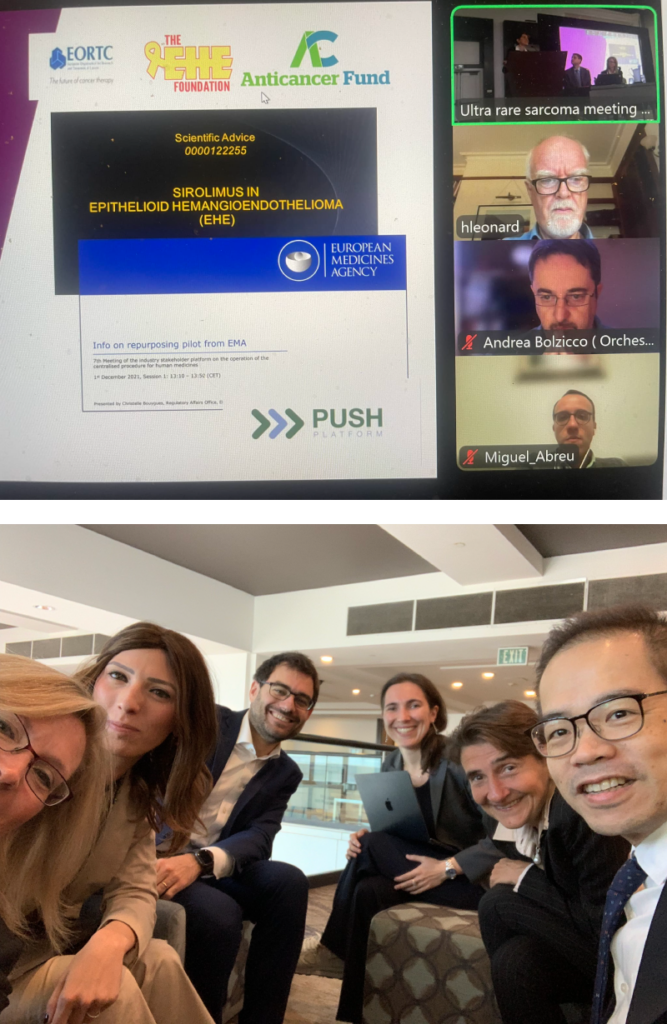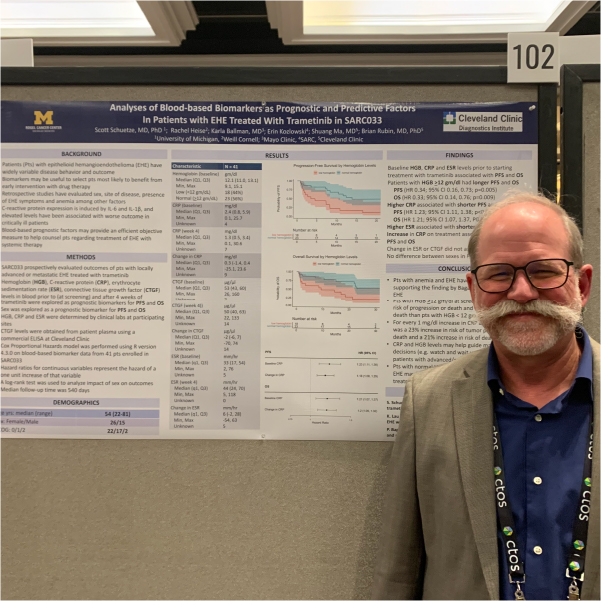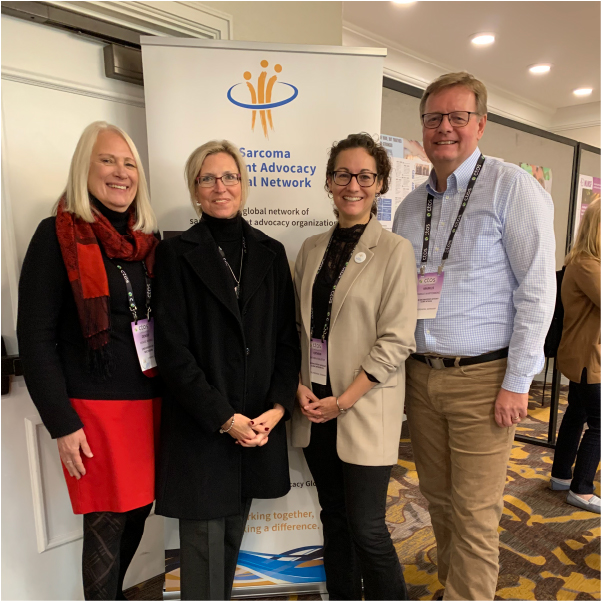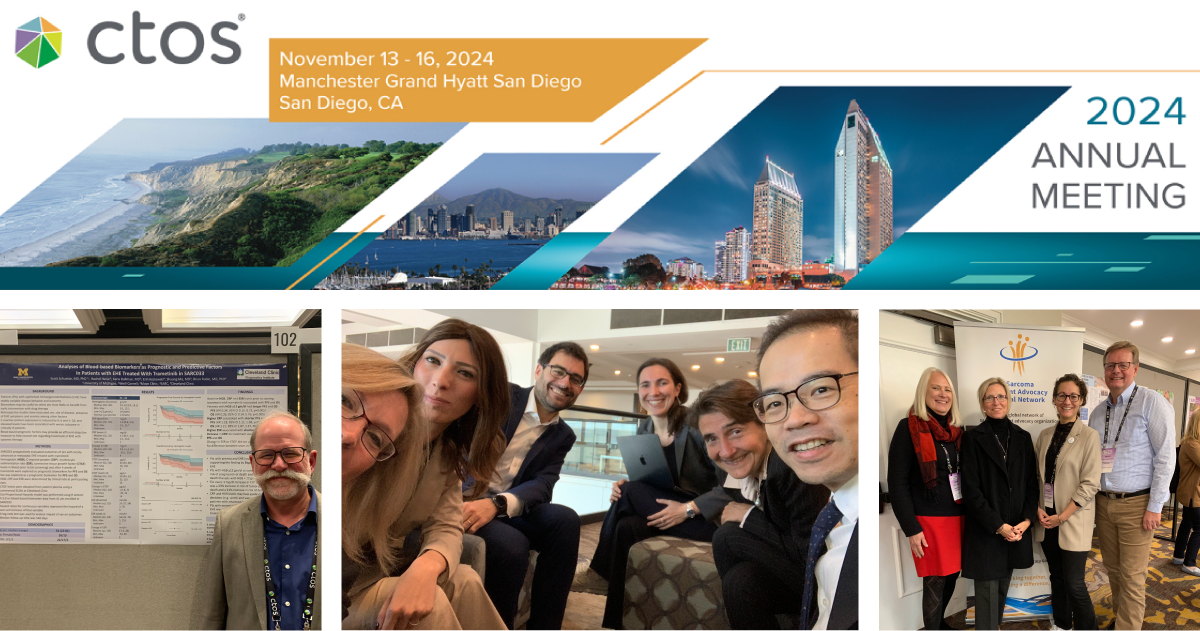In November, Denise Robinson, Executive Director and Director of Research attended the CTOS 2024 Annual Meeting in San Diego, CA. The Connective Tissue Oncology Society (CTOS), is a professional medical organization that brings together multi-disciplinary clinician-scientists, translational researchers, and advocates from all over the world to advance the treatment of sarcomas. Many of the world’s leading experts on EHE were on hand. Here are some highlights:

The Ultra-rare Sarcoma Working Group (URSWG) meeting was kicked off by Drs. Silvia Stacchiotti (INT, Milan) and Bill Tap (MSKCC, New York) to share progress and opportunities of the PUSH Project (Pushing Ultra-Rare Sarcomas Beyond Hope). This important initiative aims to accelerate ultra-rare sarcoma treatment discovery and is supported by EHE advocates, Hugh Leonard (EHERCC) and Denise Robinson (EHEF). We are grateful to the professional experts who give countless hours to the EHE community.
Dr. Scott Schuetze, University of Michigan, presented a poster expanding on data shared from the Phase 2 trametinib study in patients with EHE (Clin Cancer Res (2024)). Dr. Schuetze’s poster entitled, ‘Analysis of Blood-Based Biomarkers as Prognostic Factors in Patients with EHE Treated with Trametinib in SARC033’, concluded that patients with locally advanced or metastatic EHE who had lower hemoglobin (HGB) or higher C-reactive protein (CRP) values prior to treatment had a higher risk of more rapid disease progression and shorter survival duration. The researchers concluded that hemoglobin and CRP values may be useful prognostic biomarkers to inform treatment. We are grateful to Dr. Schuetze, Dr. Brian Rubin (Cleveland Clinic), and everyone who contributed to this body of work. We are especially grateful to the patients who participated in this research.


Andrea Vanzulli, MD, Resident physician in diagnostic and interventional radiology
Fondazione IRCCS Istituto Nazionale dei Tumori, Milan, Italy presented an oral abstract entitled, ‘Redefining Radiologic Responses in Epithelioid Hemangioendothelioma: Beyond RECIST?’. Based on a retrospective study of patients with aggressive EHE who had serosal involvement or systemic symptoms, Dr. Vanzulli and colleagues concluded that RECIST 1.1 did not identify clinical progression in up to 67% of patients with EHE-related serosal involvement. Experts have proposed new criteria for evaluation which would take into account serosal involvement, and potentially yield more accurate detection of EHE progression.
The Sarcoma Patient Advocacy Global Network (SPAGN) graciously hosted an inviting area for patient advocates to meet, network, and sometimes simply rest during the busy week. Importantly for EHE, they provide a forum for sharing the Foundation’s work with the global sarcoma community. Their important work highlighted at CTOS shares preliminary data from their Global Insights on Sarcoma Diagnosis: Preliminary Findings from SPAGN’s Survey. These preliminary findings highlight the complex and sometimes lengthy journeys patients navigate to get an accurate diagnosis. We are grateful for their support, advocacy, and inclusivity of all sarcoma patients, no matter where in the world you live.

It is always an honor to be in the presence of so many passionate doctors, scientists, and fellow advocates, who are all truly dedicated to improving the lives of people affected by sarcoma.

